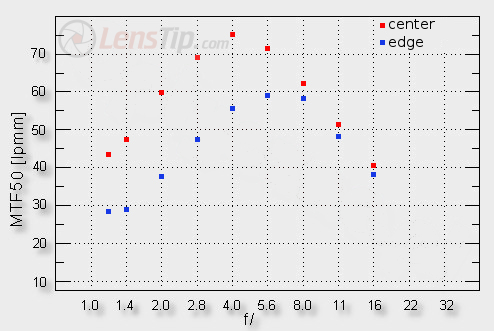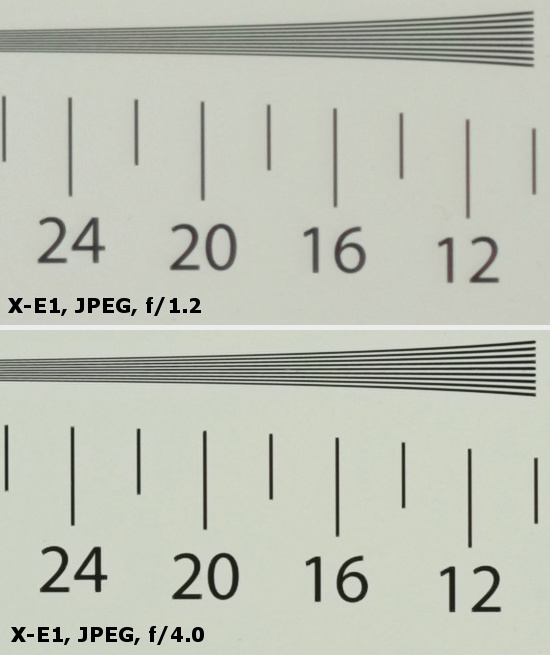Fujifilm Fujinon XF 56 mm f/1.2 R
4. Image resolution
Not so long ago we stated that the best fixed-focus lenses, tested that way, were able to reach results as high as 70-72 lpmm and the decency level was set near 40-41 lpmm. The Zeiss Touit M 50 mm f/2.8 forced us to change that a bit as its maximum resolution was 74.4 lpmm. Now we have to say that the best fixed-focus lenses can reach a level of 73-75 lpmm and the decency level is near 42-43 lpmm.
Let’s check how the Fujinon 1.2/56 compares here.
Please Support UsIf you enjoy our reviews and articles, and you want us to continue our work please, support our website by donating through PayPal. The funds are going to be used for paying our editorial team, renting servers, and equipping our testing studio; only that way we will be able to continue providing you interesting content for free. |
- - - - - - - - - - - - - - - - - - - - - - - - - - - - - - - - - - - - - - - - - - - - - - - -

When it comes to the maximum relative aperture the tested lens is on the borderline between decent and weak results. In fact the performance assessment by f/1.2 will strongly depend on your personal preferences. Some users might consider them quite satisfactory while others might declare them a bit too weak. Fortunately by f/1.4 the image becomes completely acceptable and by f/2.0 the lens is able to climb to a very good level of about 60 lpmm. What’s important, on stopping down to f/4.0 the Fujinon breaks the official resolution record of the Touit, getting as high as 75.6 lpmm.
The centre of the frame is really beyond reproach but the edge of the frame is quite another matter - by f/1.2 and f/1.4 it is really weak. It improves a bit by f/2.0 but still the results land below the decency level which is exceeded only near f/2.5 - overall nothing to be proud of. However if you remind yourself of the results of the Nikkor AF-S 1.4/85G, a device more expensive than the Fujinon which on the edge of full frame had to be closed down to f/2.0 just to reach the decency level, you might be more lenient in your assessment. What’s interesting, the cheaper Nikkor AF-S 85 mm f/1.8G had to be closed down to near f/2.5 to exceed the decency level on the edge of full frame as well.
The other tests of lenses designed for mirrorless cameras seem to confirm the fact that they tend to have more problems with good resolution on the edge of the frame than their reflex cameras’ brothers. You shouldn’t be surprised by that. A shorter distance between the sensor and the optical system combined with small physical dimensions of the mirrorless lenses cause telecentricity problems which adversely affect the resolution results on the edge of the frame. Our opinion is confirmed by the results of another fast telephoto lens for mirrorless cameras, the Leica DG Nocticron 42.5 mm f/1.2 Asph P.O.I.S. On the edge of the frame, at the maximum relative aperture, it was able to exceed the decency level but only barely so; then its performance was marked by a huge difference between MTFs in the centre and those on the edge.
Below we present crops taken from photos of our resolution testing chart saved as JPEG files.
 |






